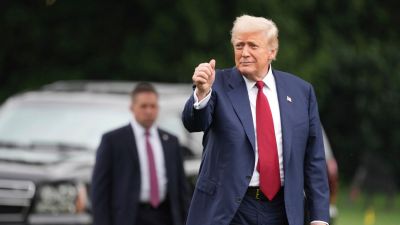‘Plan to make Navi Mumbai slum-free by 2030’: NMMC Commissioner
With a focus on infrastructure, sustainability, and governance, Dr Shinde outlines key initiatives that aim to enhance Navi Mumbai's liveability and readiness for future challenges.
 Upcoming projects like the Airoli-Ghansoli bridge and the Turbhe-Kharghar tunnel will improve access and ease traffic
Upcoming projects like the Airoli-Ghansoli bridge and the Turbhe-Kharghar tunnel will improve access and ease trafficNavi Mumbai Municipal Corporation (NMMC) Commissioner Dr Kailas Shinde shares his vision for the city’s development, its growing population, and plans for improving the quality of life in an interview with Siddhant Konduskar. With a focus on infrastructure, sustainability, and governance, Dr Shinde outlines key initiatives that aim to enhance Navi Mumbai’s liveability and readiness for future challenges.
Navi Mumbai is known for its planned infrastructure. What are your main priorities for development in the city?
Navi Mumbai is a well-planned city with good roads and sanitation. My focus is to enhance connectivity through infrastructure projects that will make the city even more seamless and convenient. Upcoming projects like the Airoli-Ghansoli bridge and the Turbhe-Kharghar tunnel will improve access and ease traffic. We are also adding a new line to the Thane Creek Bridge at Vashi to improve entry and exit points.
The population of Navi Mumbai is increasing. How do you plan to address this growth?
Currently, the population is 18 lakh and it is expected to reach 23 lakh by 2028. We are preparing with improved road networks, expanded metro lines, and enhanced suburban rail connectivity. Water supply is another concern, but the Bhira Dam project will ensure a steady supply of potable water. We are also ready with a 450-million-litre sewage treatment plant to manage future challenges.
What other infrastructure projects are in the pipeline, apart from the road network?
In addition to transport, health and education are key focus areas. We have three 600-bed hospitals, with a fourth under development. We also have Urban Primary Health Centres, mother-child care units, and reproductive healthcare facilities across the city. In education, we are working on a PG medical college in Nerul and have converted three municipal schools to CBSE. With Pratham Foundation’s support, we aim to bring public education on par with private institutions.
Navi Mumbai is known for its quality of life. How do you plan to improve this further?
Liveability is a priority. We are developing an Olympic-sized sports complex within four years. There are plans for museums, cultural centres, open theatres, and more recreational spaces. We have a robust transport network with NMMT buses, EV charging stations, and round-the-clock water supply. By 2030, my goal is to make Navi Mumbai slum-free through a large-scale cluster development initiative.
Infrastructure often impacts the environment. How is Navi Mumbai addressing this?
Navi Mumbai currently has 34% green cover, and we aim to maintain and expand it. We have 15 lakh trees, and we focus on planting indigenous species like Mango, Neem, and Tamarind, which contribute to the ecosystem. While infrastructure projects may require some tree cutting, especially for roads, we ensure compensation and always try to find alternatives to minimise environmental impact.
How are you ensuring transparency in governance at NMMC?
We’ve introduced an e-office system to streamline operations across all NMMC departments. By digitising files, we ensure faster approvals, better tracking, and reduced chances of misplacement. A dedicated computer room will support this transition. Additionally, we are moving citizen services online to reduce physical visits, improving convenience for Navi Mumbai residents.












